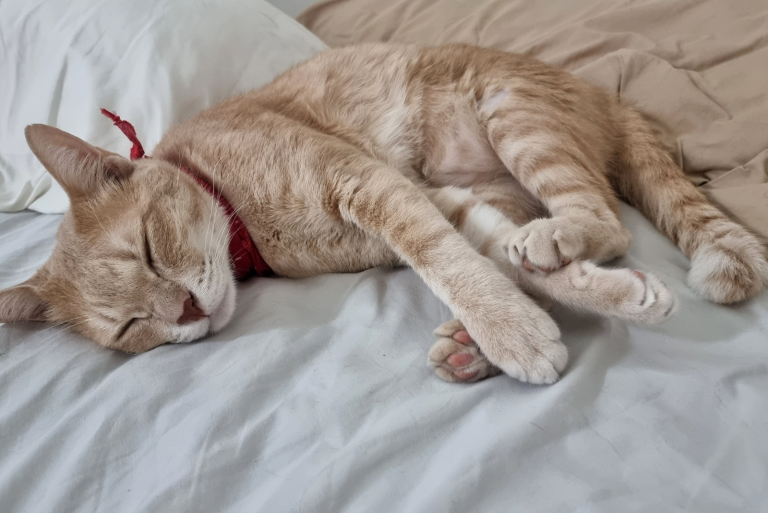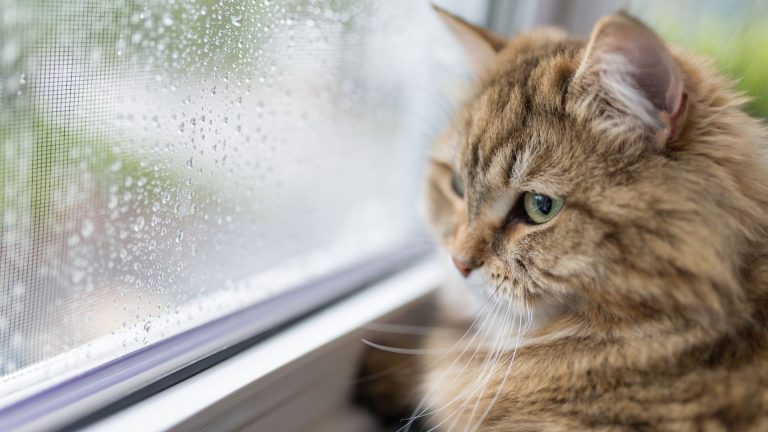Why Do Cats Bite Each Other’s Necks? Best Explanation!

If you’ve noticed your cats biting each other on the neck, don’t worry, that is nothing new or unusual. It is actually quite common in multi-cat households.
However, you still need to find the reason for this behavior so you know how to act on it. Most of the time, there is nothing to worry about when your cats bite each other on the neck, but on rare occasions, your cat might be trying to tell you that something’s wrong.
Continue reading to see the reasons why cats bite each other on the neck, and how you can safely and effectively deal with the problem.
8 Reasons Why Cats Bite Each Other On The Neck
Most commonly, cats will bite each other’s necks during playtime, or while they’re grooming. However, sometimes your cats might actually be fighting or turning to aggression.
1. Your Cats Are Just Playing
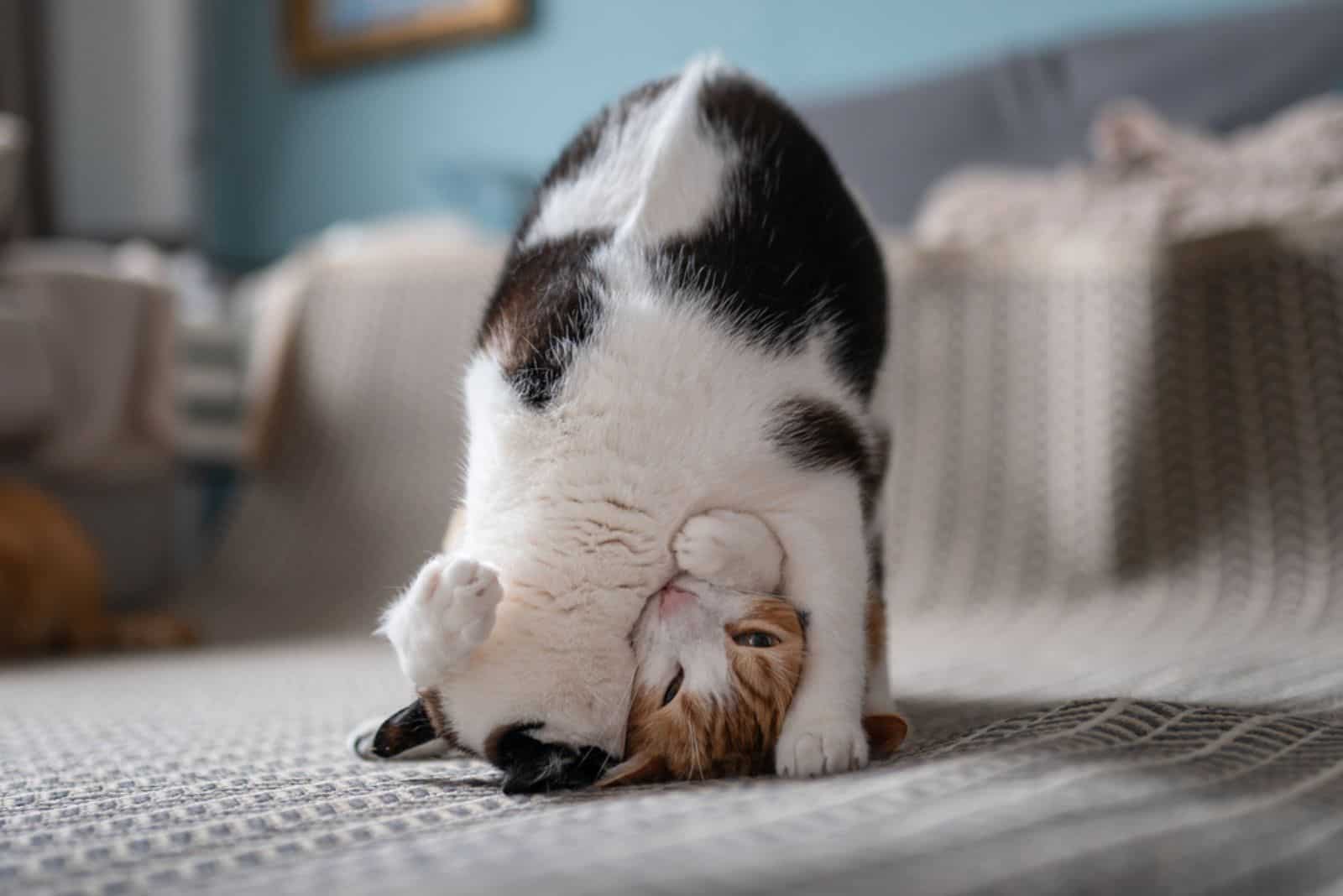
Biting each other’s necks while playing is a behavior that most cats grow out of. Kittens are more prone to this play behavior and you’ll likely notice it if you have a litter of kittens or you adopt two kittens at the same time.
This is their way of expressing their natural instincts, imitating the hunting behavior all cats have within them. Kittens and young cats prey upon other cats, pounce at each other, claw, and chase each other and different objects, like cat toys, for example.
This form of playful behavior teaches your cats the behavior and skills they’ll need when they grow up. While attacking their siblings, kittens learn to socialize and pick up on the different reactions they receive.
Most cats outgrow this phase, but some continue doing it in the adult stage of their life. This doesn’t necessarily mean that your cats are aggressive; if there are no signs of aggression, your cats are just playing.
See also: Are My Cats Playing Or Fighting? This Is How I Found Out!
2. One Of Them Is Asserting Their Dominance
This usually happens when you adopt a new cat and the cat that’s already living in your house starts to act differently. It shows dominance by biting the other cat on its neck.
This is the easiest spot on the cat’s body to reach, and that’s why cats mostly bite each other on the neck. Cats do it so they can “claim their territory”, plus, the bite on the neck evokes their prey drive.
However, this behavior can also happen with two cats that have been living together for some time. One cat might be biting the other in a mixture of playfulness and dominance, which is ok as long as neither cat seems to be hurt.
3. It’s Their Hunting Instinct

The area of the neck is one of the, if not the most, vulnerable spots on any animal. This is why most wild animals, especially of the Felidae family, aim at the neck of their prey.
They all have this inner instinct that drives them to attack and prey upon other animals or objects. This is why this behavior is often seen as normal, since all cats have a natural instinct to do it.
However, these instincts are more common in younger felines as they’re still learning. Sometimes cats can bite other cats’ necks out of playfulness, and then it gets heated up until their natural instinct kicks in and changes playtime.
Fortunately, this usually ends without injuries or pain.
4. They’re Expressing Mating Behavior
When cats mate, males frequently appear to be more dominant than females. To keep the female motionless, the male cat climbs on top of her and bites her neck.
In general, this isn’t hurting the female, it is done mostly to protect the male at his vulnerable moments. Neck bites also relax female cats and keep them from attacking the male and turning around to bite him.
This is natural on certain occasions, and you may sometimes even notice your neutered/spayed cats exhibit this mating behavior. They sometimes do it to cats of the same sex, or even to stuffed toys.
It might mean that the cat is asserting dominance, or that your cat simply likes it. Another example of neck bites that don’t hurt is when mother cats carry their kittens.
Cats are skilled at delicately taking their young by the necks, usually to carry and move them from one place to another.
This appears to be the safest method for mama cats to carry their babies, plus it is the most successful method. It is also said that these neck grabs from mother cats soothe the kittens.
See also: Wait A Meow-ment! Do Cats Mate With Their Siblings?!
5. Your Cats Are Grooming Each Other
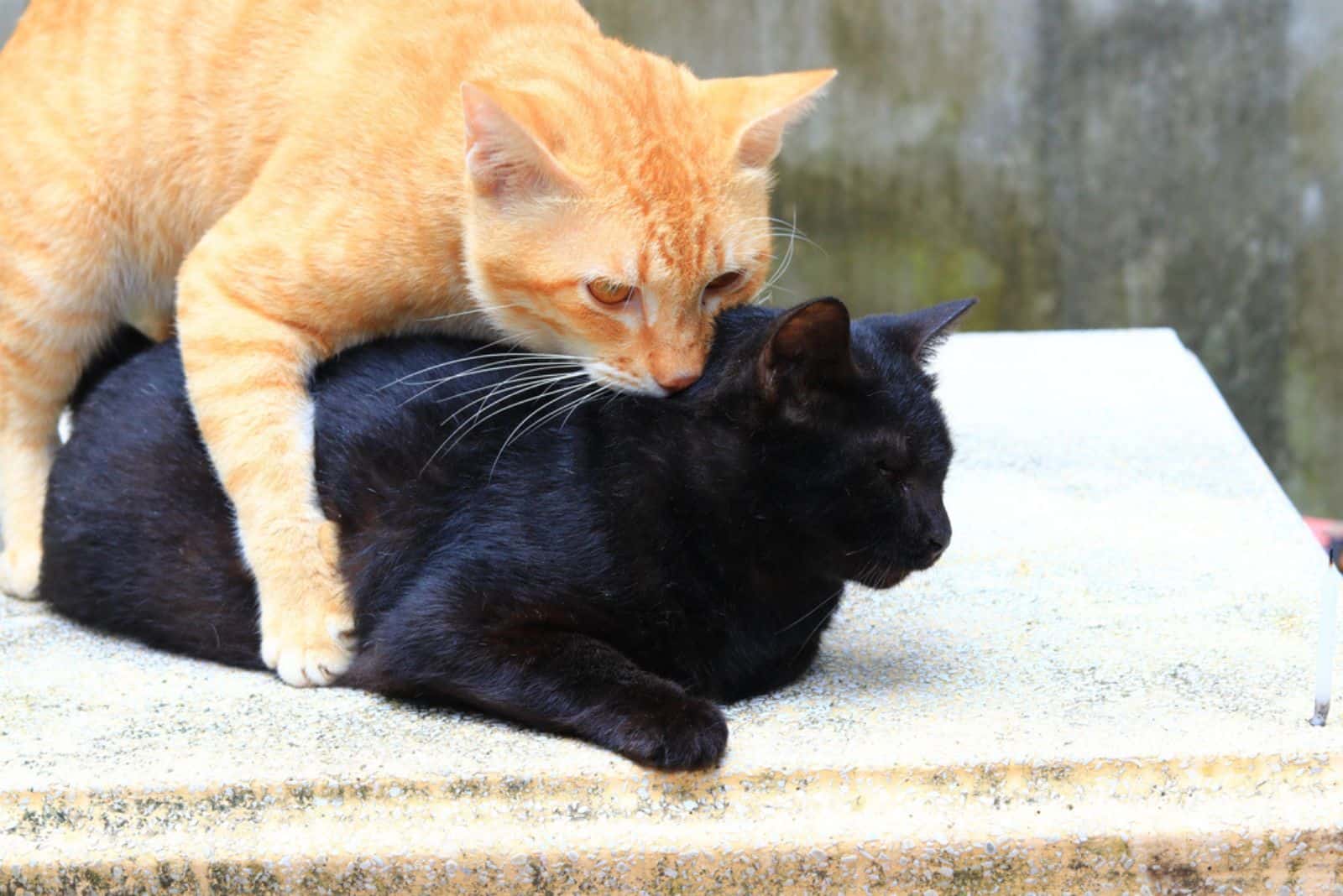
If you have two (or more) cats, you’ve undoubtedly witnessed two different actions during their grooming sessions. Either the cat that’s being groomed suddenly bites the other cat or the cat that’s doing the grooming is also biting the other cat.
If it’s the first-case scenario, it’s probably due to overstimulation. You may even experience it if you’ve been petting your cat for too long; if it has had enough, it may bite you.
It might seem sudden to you, but that cat has had enough cuddles for the day! Cats get overstimulated easily if they are being petted, groomed, or licked for too long.
So, if the other cat has been grooming them and they’ve had enough of it, they’ll bite them as a way of saying “stop”. If it’s the other way around and the biting is done by the cat that’s doing the grooming, then it is probably a natural impulse.
Almost all cats inherit natural impulses, and sometimes they kick in. As I said previously, mama cats bite gently on their kittens’ necks, most usually when they carry them around, and they do it as they’re grooming and cleaning their kittens as well.
All cats bite and nibble their own fur while they’re cleaning themselves. They do this to eliminate any debris or to get rid of tangles in their fur.
However, always pay attention to your cats so you’re sure that it’s just a harmless nibble and not a vicious bite.
You might also be interested in: Why Does My Cat Nibble Me? Why Do We Say Love Bites?
6. They Might Be Fighting
Neck biting can also manifest as a form of aggression when it comes to sharing. Do your cats have their own bowls and toys, or do they share everything?
If your cats share their food, water, toys, etc., then they are likely to attack and bite one another due to resource rivalry.
This can also be a part of showing dominance; the dominant cat will claim its territory and its items, and bite the other cat to defend it. Cats frequently get angry and/or aggressive when they have to share their food and toys.
It is normal for a cat to try to secure and protect what’s theirs. This protective behavior is typically shown by biting the other cat (which they see as a rival in this situation), although it can be expressed through growling and hissing as well.
If you don’t solve their problem, your cats will likely fight. The best thing to do to avoid catfights is to supply each cat with its own space, water and food dishes, litter boxes, and everything else they need. Basically, what one cat has, you should provide for the other cat as well.
Keep their things in separate spots, so when they wish for some privacy, they can have it. Pay attention to your cats, and if you notice any signs of aggressive behavior, act on them as soon as possible.
7. Your Cats Lack Socialization
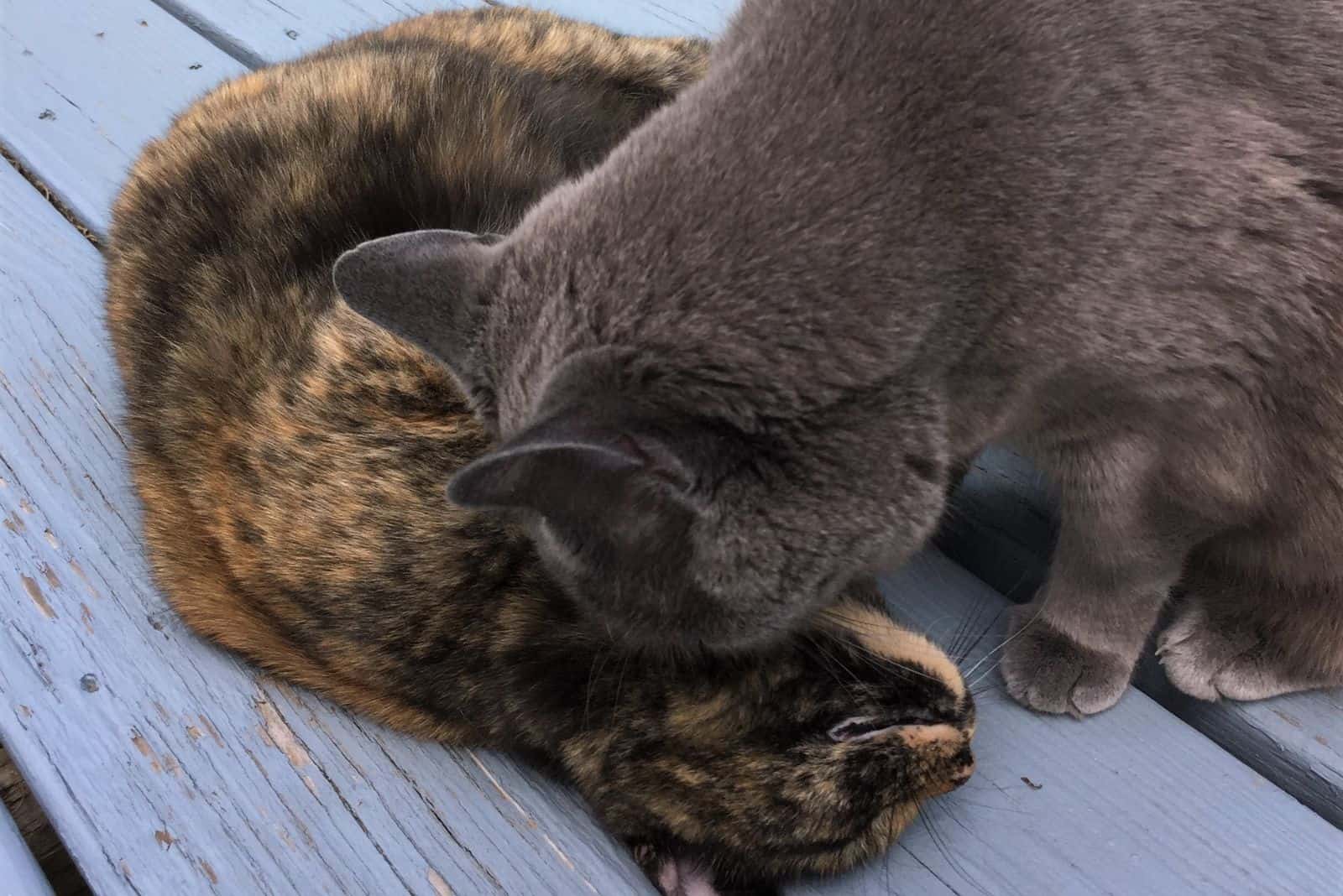
Cats that haven’t been socialized are always more likely to be aggressive toward other cats. This is not always the case, but they are more prone to biting and hissing at other cats.
Every cat should be socialized from an early age because if they don’t learn to behave with other cats (as well as other pets and people) in the beginning, they’ll likely bite and misbehave when they get older.
This is why it’s important to begin socializing your cat as early as two weeks of age. Biting or even hissing at strangers, and at guests that come by your house, are all signs of a cat that lacks socialization.
Your cat will be scared and hiss at unfamiliar people or unfamiliar cats in order to scare them away from its area. What I often see in other people’s pets, are cats that haven’t learned to socialize with other cats, which in most cases leads to improper behavior.
These cats are most likely to bite other cats’ necks, or worse than that. If you have a cat that is violently biting another cat’s neck, you have to stop it.
Consult your vet and a certified cat behaviorist so you can work together to socialize your cat and encourage proper behavior.
8. Notice Any Other Behavioral Changes?
Perhaps your cat has suddenly become aggressive – perhaps it’s hissing at you or biting your other cat. This is probably your cat’s way of telling you something. Whenever sudden behavioral changes occur, something else is probably the cause for it.
If it’s out of character for your cat to bite your other cat’s neck, pay attention to it and try to determine whether your cat is under some kind of stress.
Maybe you’ve made some changes in your home, i.e. in your cat’s environment, maybe some new people have been coming by your house, or there has been a change in your yard (if you let your cat out).
My Cat And House Guests
I know my childhood cat, Mittens, always hid away when someone came to our house. My parents used to have dinners and parties at our house quite often, but Mittens never got used to them.
He lived for 9 and a half years, and always hid in my parents’ room, under their bed, until all the guests would go away.
Only if we had guests staying at our house would he get used to them, but he would never sit with them or go near them. He would always lie beneath my dad’s feet.
Pay Attention To Your Cat’s Behavior In Different Circumstances
If you haven’t had something like this happen to your cat, you have to look for more signs. Are there any symptoms of illness or pain?
There are many health problems that can cause your cat to act aggressively or exhibit sudden behavioral changes. Some medical disorders, such as arthritis, tend to cause persistent and chronic pain in cats, which often results in behavioral changes.
Another cause can be the development of hyperthyroidism or some kind of neurological illness. These diseases are frequently accompanied by other symptoms, so pay attention to your cat and report anything unusual that you notice to your vet.
If you’re not sure what’s wrong with your cat, or if you suspect there is some health issue present that’s causing your cat to behave differently, consult your vet at once.
5 Ways To Stop Your Cats From Biting Each Other
If your cats are bored, or you suspect that some other reason from the list above is applicable to your cats, try out some of the following solutions. I hope you’ll stop your cats from hurting each other quickly and easily.
1. Keep Your Cat Entertained

When a cat is bored, they are more prone to engage in undesirable actions in order to keep themselves amused. Unfortunately, biting is one of them.
Providing your kitten with toys and a cat tree will help keep your feline amused and allow it to exercise its hunting skills on something other than its companions.
However, when they do participate in aggressive playtime, you should try and divert their attention. Entertain your cat with a toy, preferably its favorite one, and as soon as your cat grabs the toy, pull it away from the other cat.
2. Provide All Your Cats With Enough of Everything
Forcing your cats to share their belongings can create unnecessary stress, which can further escalate to aggressiveness. It doesn’t have to come to this, since the solution is so simple.
You can lower the likelihood of your cats getting into a fight just by providing each of them with their own bowls, toys, litter boxes, etc. Provide each cat with its own private spot in your home, its own territory, and keep their stuff divided as well.
If you suspect that this is the issue for your cats, try to provide each of them with their own belongings. Never make your cats share anything unless they do it on their own.
If you need help choosing cat trees and cat scratchers, check out this review as well as the prices of beautiful, realistic-looking cat trees: Cat Tree That Looks Like A Tree – TOP 10 Product Reviews.
I’m telling you, you won’t know if they are better for decorative purposes or cat amusement purposes, lol.
3. Don’t Reward, But Don’t Punish Either
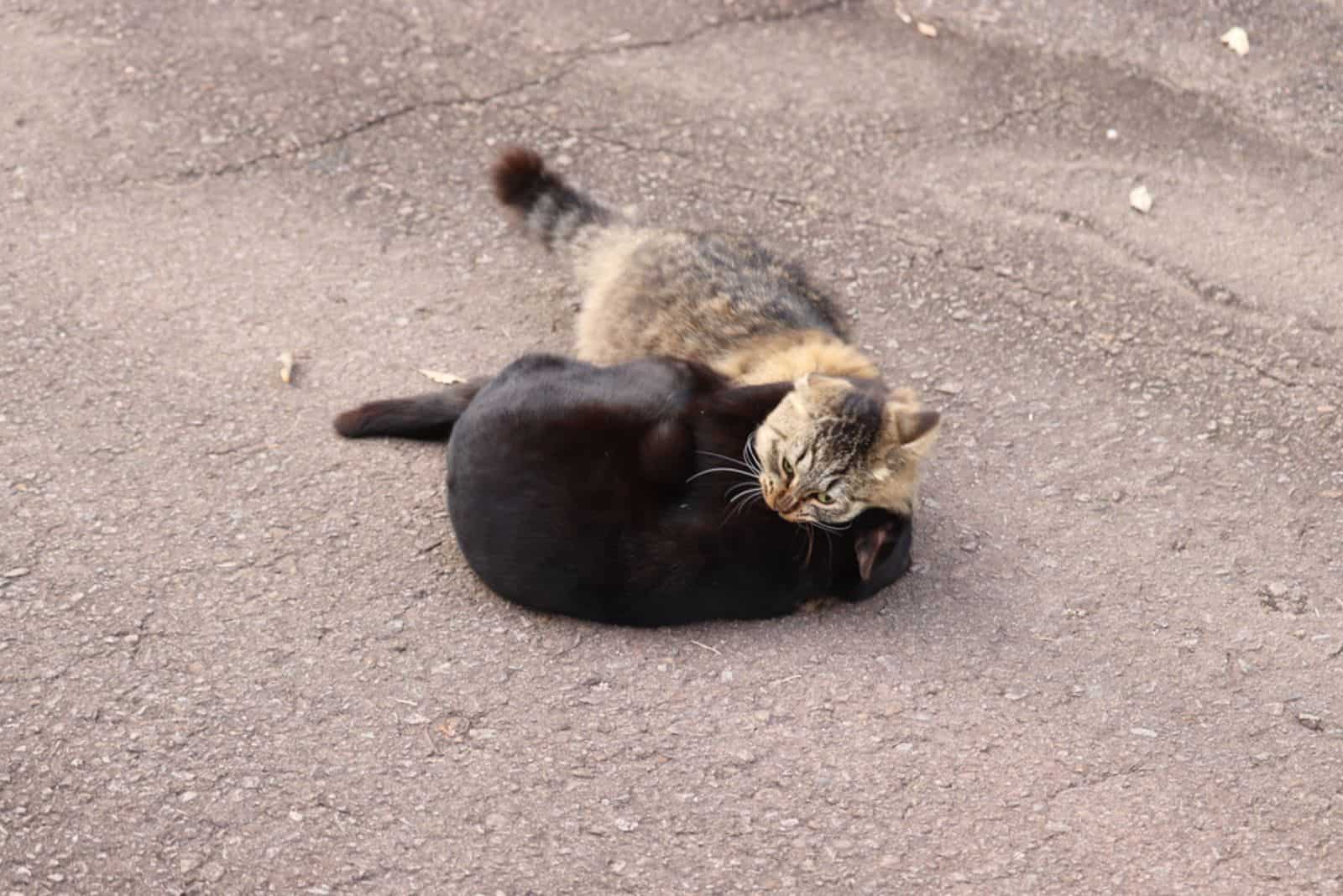
Punishing your cat can only make things worse if you’re dealing with an aggressive kitty. You shouldn’t reward your cat when you stop them from biting the other cat, either.
However, you should only reward them when they behave nicely on their own. If one of your cats seems to be the dominant one in most situations, you should give them treats when they’re around the other cat.
This gives them a sense that everything is fine and there’s no need to fight. This has proven to be an effective method when it comes to stopping your cats from biting each other’s necks.
If your cats start fighting, just try and divert their attention, and if you manage to do so, that’s good. You’ve eliminated the possibility of them developing a habit of biting their cat buddy, but that’s nothing to be praised or rewarded.
If you do reward your cat for it – let’s say you give them a treat – your cat will assume that you’re praising it for its actions and it will try and bite the other cat again just for you to come and separate them and give it another treat.
Neither punishing nor rewarding will be effective in this case. Your cat can only learn to fear you, and might even see your actions as an invitation to act aggressively again.
If your cat is behaving aggressively, and you try to punish it, that only makes things worse. I’ve done it in the past, and it only made my cats angrier so they acted even worse after I yelled at them.
I am not making the same mistake twice, believe me! However, you can encourage positive actions, of course. When your cats behave well with other cats, reward them.
4. Don’t Force Things
Cats tend to be very territorial, so when you decide to bring another cat into your home, you might face your first cat turning to its “aggressive side”.
You can make the adjustment process easier for them by putting your cats in separate rooms. Then gradually introduce them to one another.
You can do this by letting them smell each other’s scents, and then letting them interact with each other under your supervision.
For detailed instructions on how to introduce your cats to one another, check out this article: Warning Signs When Introducing Cats And How To Do It Properly!
5. Socialization Is The Key!

Cats that were never properly socialized are usually more aggressive toward other cats. This kind of behavior forces the cat to be separated from others, but you don’t need to do so.
Instead, you can let your cat investigate the scents of other cats before you gradually introduce them to each other. Don’t isolate your cat; that can only make matters worse.
It’s better to start gradually introducing the cat to various scents, especially those of other felines. You can even take your cat for outside walks or let it wander through the house while other cats are in another room.
Just let it sniff around and get acquainted with different scents. Afterwards, you can introduce your cats, as I mentioned in the previous paragraph.
Final Verdict
So how did I determine why does my cat bite my other cat’s neck? Simply put, by paying attention and observing their body language.
A cat’s body language can tell you a lot of things, and in this situation, you can read whether your cats are playing or if the playtime has gone over the line.
Your cats can be biting each other’s necks because of playfulness, but also if they’re fighting. It may be that they lack socialization, if they are expressing mating behavior, or if they’re simply grooming one another and trying to get rid of fur tangles.
Only rarely, the cat that’s doing the biting can be suffering from some health issue and is trying to bring your attention to it. However, there’s a solution to any problem here, so pay attention to your cats to see why they’re biting, and start from there!
Hope this article was helpful and that you’ll have no trouble stopping your cats from aggressive behavior in the future.




